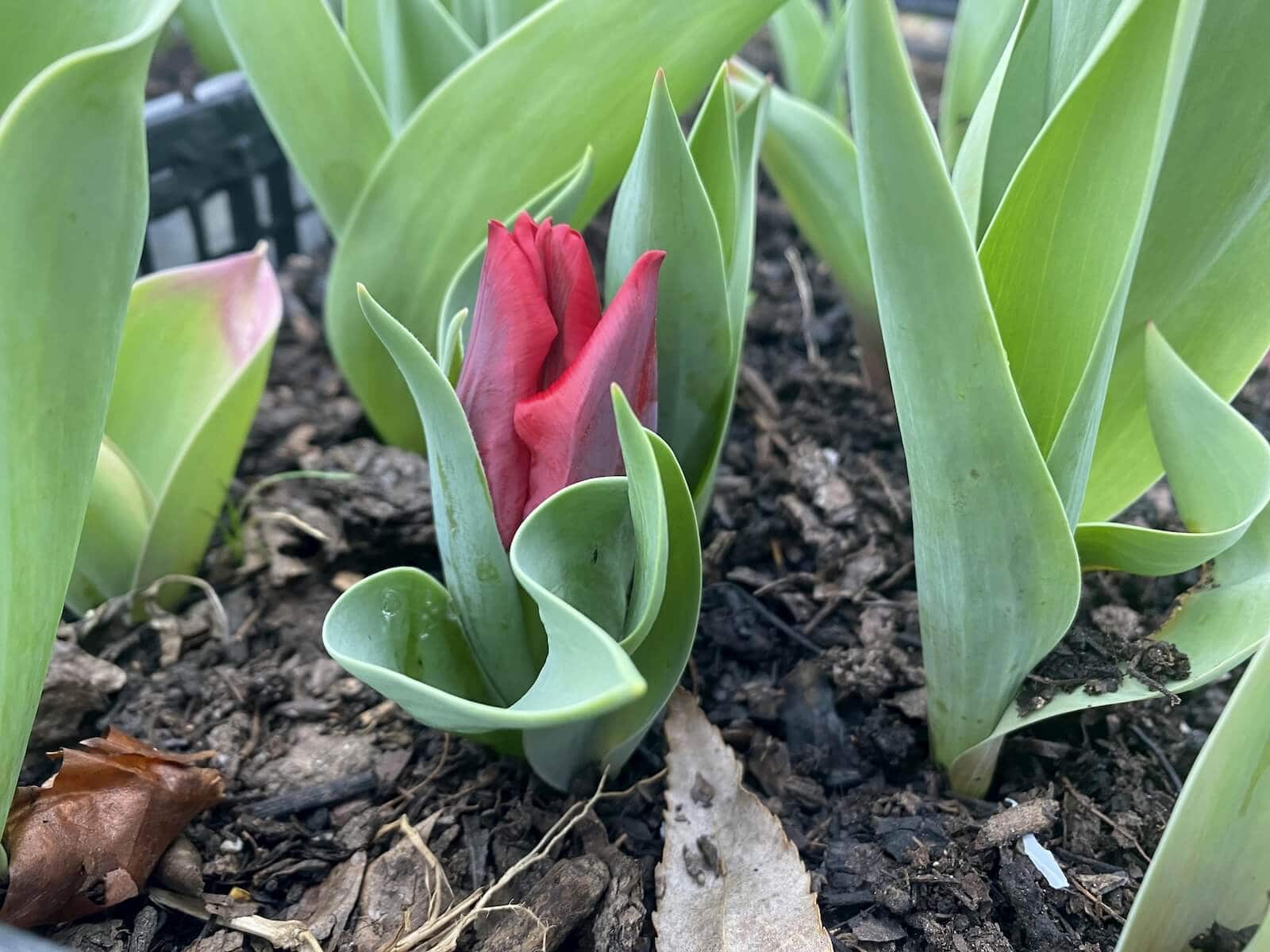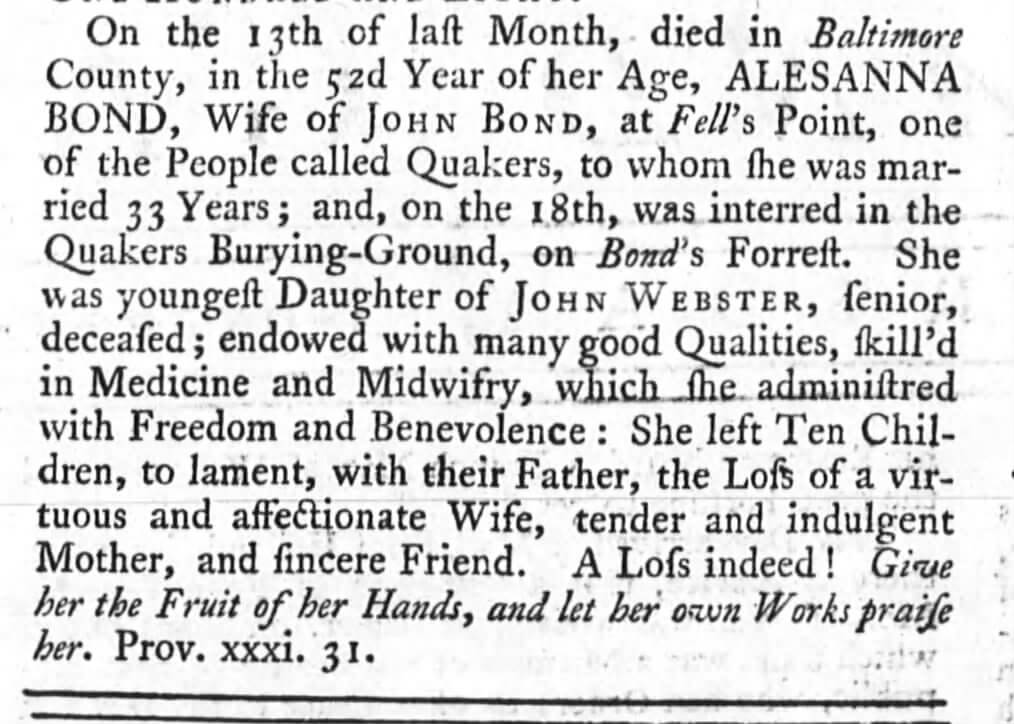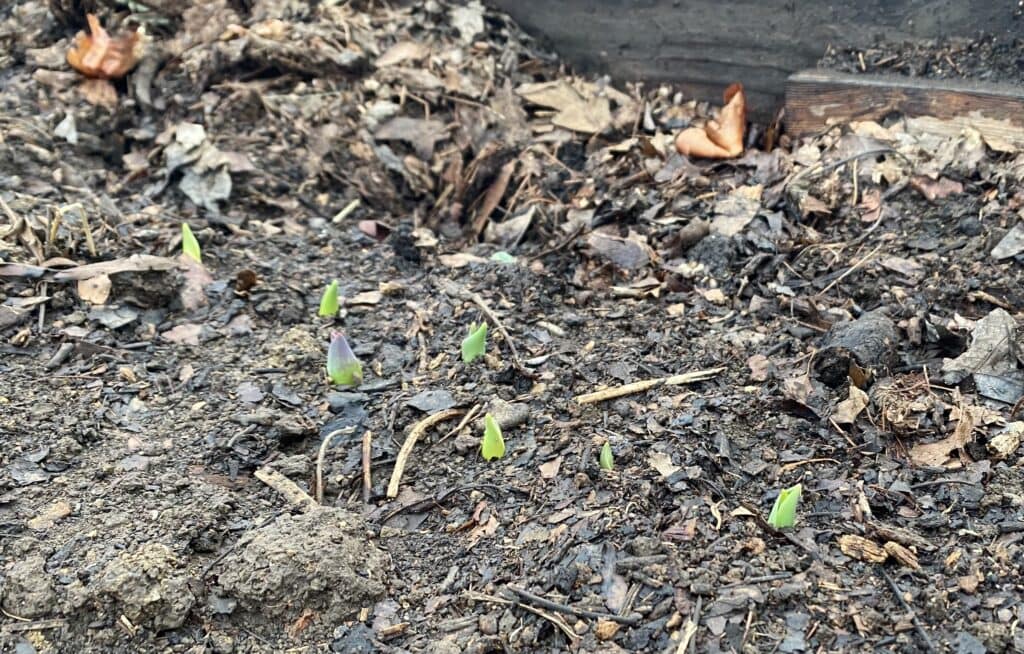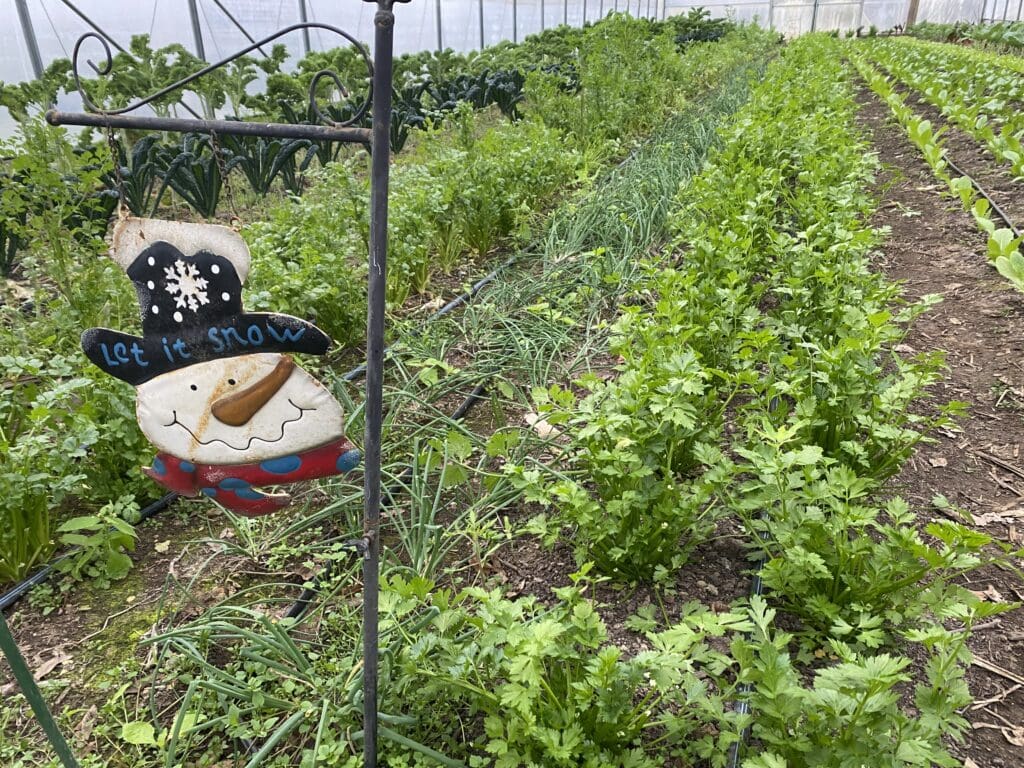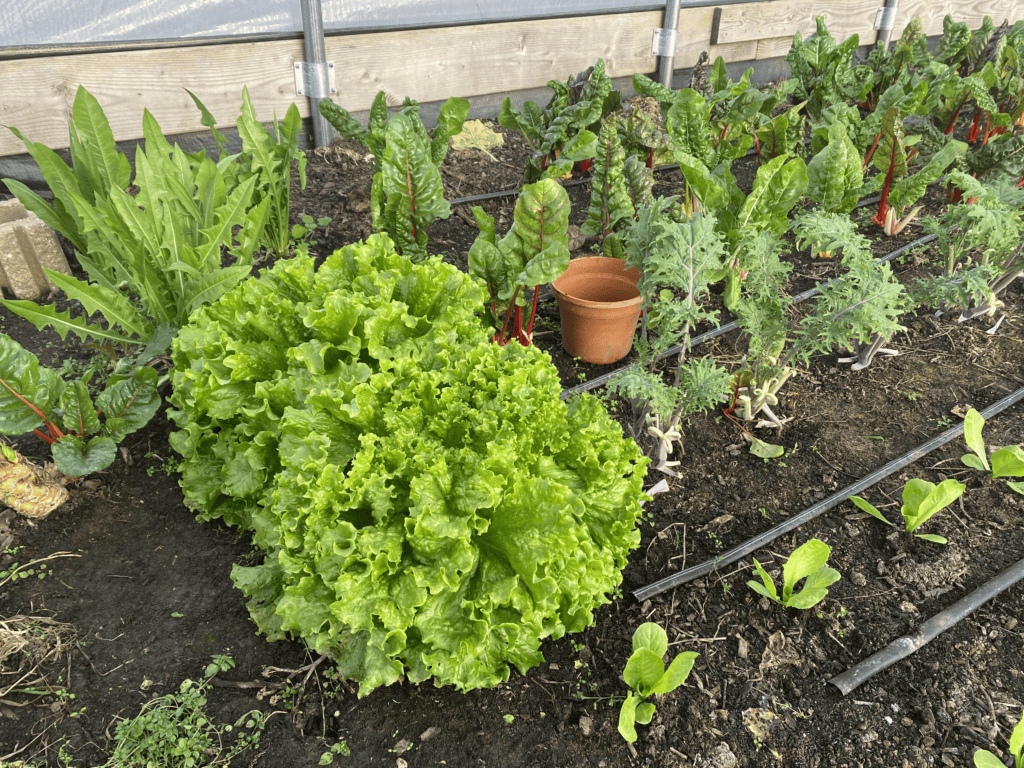This post may contain affiliate links. Probably doesn’t, but it might. It doesn’t cost you anything extra but if you use these links to buy something, we may earn a commission.
“If you look the right way, you can see that the whole world is a garden.” – Frances Hodgson Burnett, author of The Secret Garden
In many ways, I think my family has always seen the farm as a large flower garden. And they have expressed their love of the ground and love of life through flowers. “If you look the right way…”
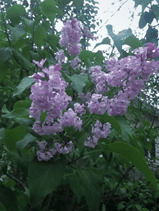
I have always found it fascinating that my very practical and frugal family has had a spot, always, for flowers in the mix of growing to feed the family and growing for the extra cash to pay the taxes.
My mother remembers cutting lilacs and selling them at the King Street Farmers Market in the 1930s. We still grow lilacs. The oldest varieties have a wonderful sweet scent.
My mother has told stories of her mother, cutting and arranging flowers, and then selling the bouquets for 35 cents. When my grandmother no longer could tend the flowers, my mother took over that job. Without hesitating. And she loves flowers. We still offer cut flower bouquets (a little more than 35 cents…).
The reason we built our first greenhouse was to be able to start flowers sooner. Every spring, we start a lot of flowers for the cutting garden as well as for sale. And the reality is that flowers have always been a very small, but much loved, part of the business.
I have found a love for flowers reaching back to our German ancestors who arrived here in the 1840s. Wilhelm Rotthouse and Louisa Schulmeister arrived separately in the United States, their families meeting in Philadelphia. Wilhelm’s first job in the United States was working at a nursery in Philadelphia.

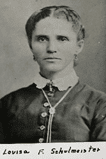
After William (he anglicized his name soon after arriving) and Louisa married in 1859, they ran a nursery and small farm in Wilmington for a few years. William was known for his flowers and greenhouses. They moved to a small farm on Concord Pike in 1868. The farm was located close to where Aldersgate Church currently is. Sharpley School was built at the corner of the farm. They raised their 4 of their 6 children (two died young), grew vegetables, grains, had a smokehouse, and flowers, as you can see on the hand-drawn map. They sold produce and flowers at the farmers market in Wilmington, at their corner on Sixth and King (opposite the Webster’s stand). Prior to the market stand, they sold flowers at 8th and Orange—the “country” at that time.
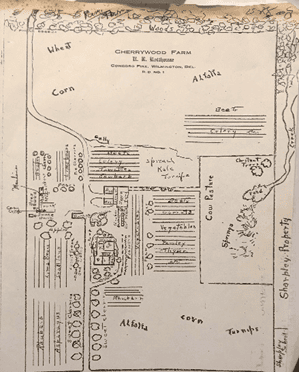
Louisa sewed clothes, preserved food, tended the children, taught them music, and had her flower garden close to the house. For inspiration, beauty, joy. And probably a bit of extra cash.
The Rotthouses called their farm “Cherrywood,” because of the abundance of cherry trees planted on the farm. They sold sweet and tart cherries in bulk to dealers in Philadelphia, as well as selling the cherries in the Wilmington market. They sold vegetables at the market, and flowers.
Will Rotthouse, the second oldest of the Rotthouse children, moved to Rehobeth and opened a nursery. Flowers and plants were his life’s work. My grandmother, Rachel Webster, remembered visiting Uncle Will at Rehobeth regularly, and what a wonderful trip that was. All those beautiful flowers plus going to the beach!
Louisa and William’s youngest son, Harry, continued farming at Cherrywood with his wife, Mabel Talley. I remember Harry Rotthouse, my great-grandfather. He tended the flower garden with equal care as with his asparagus patch. He grew gorgeous gladioli. Mabel dried herb flowers and made bouquets for the market. We still grow “glads.”
While William and Louisa were cultivating flowers and vegetables, Mary P. Webster was growing flowers at the farm on Foulk Road, as well as coaxing all the vegetables to grow. She loved flowers! She planted the lilacs that we still love.
Then Mabel and Harry’s daughter, Rachel, continued the love of flowers. She planted peonies as a bride when she married John Webster and came to the farm on Foulk Road, Highland Orchards. The peonies that Rachel planted still grow and bloom each year, and are incredibly fragrant!
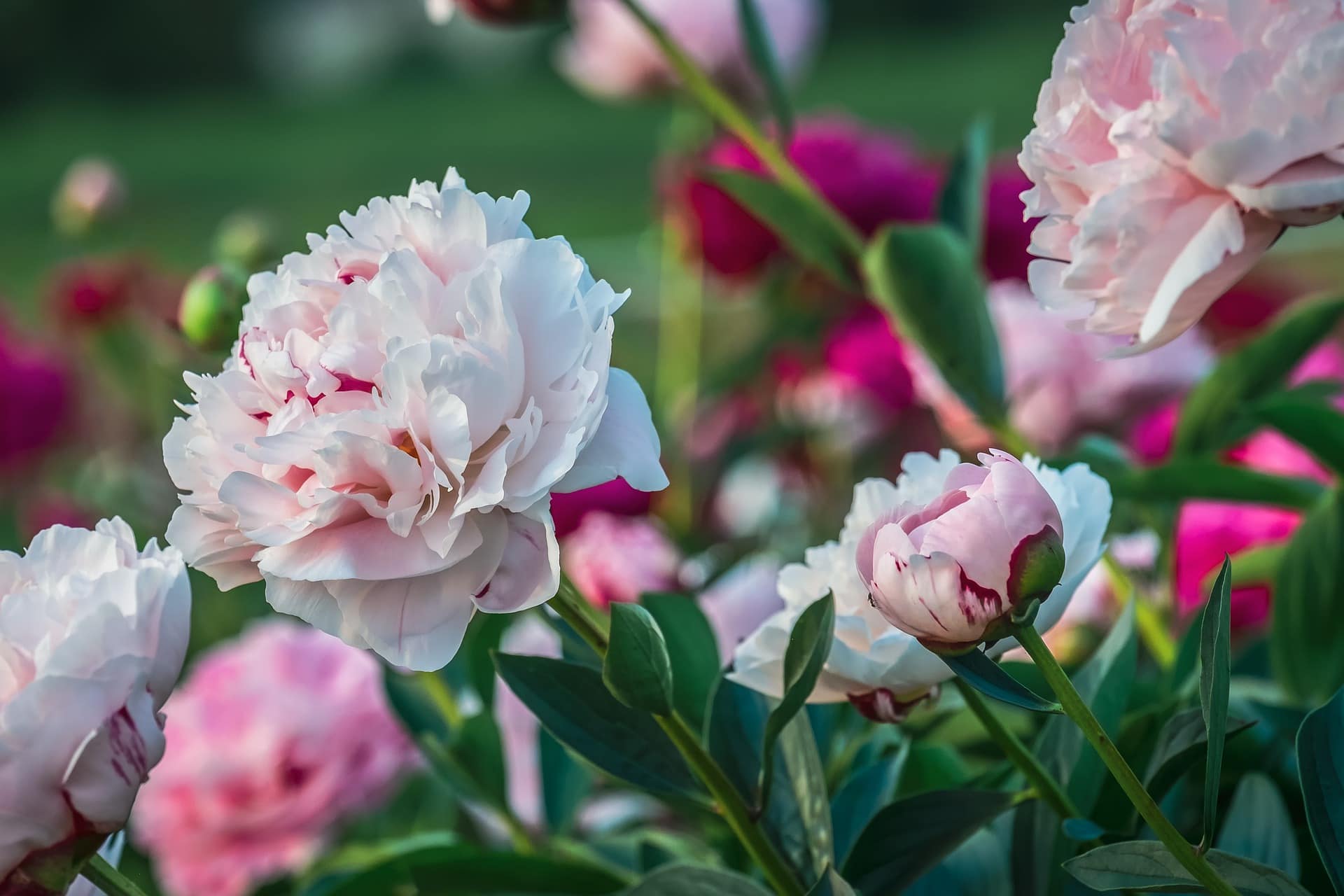
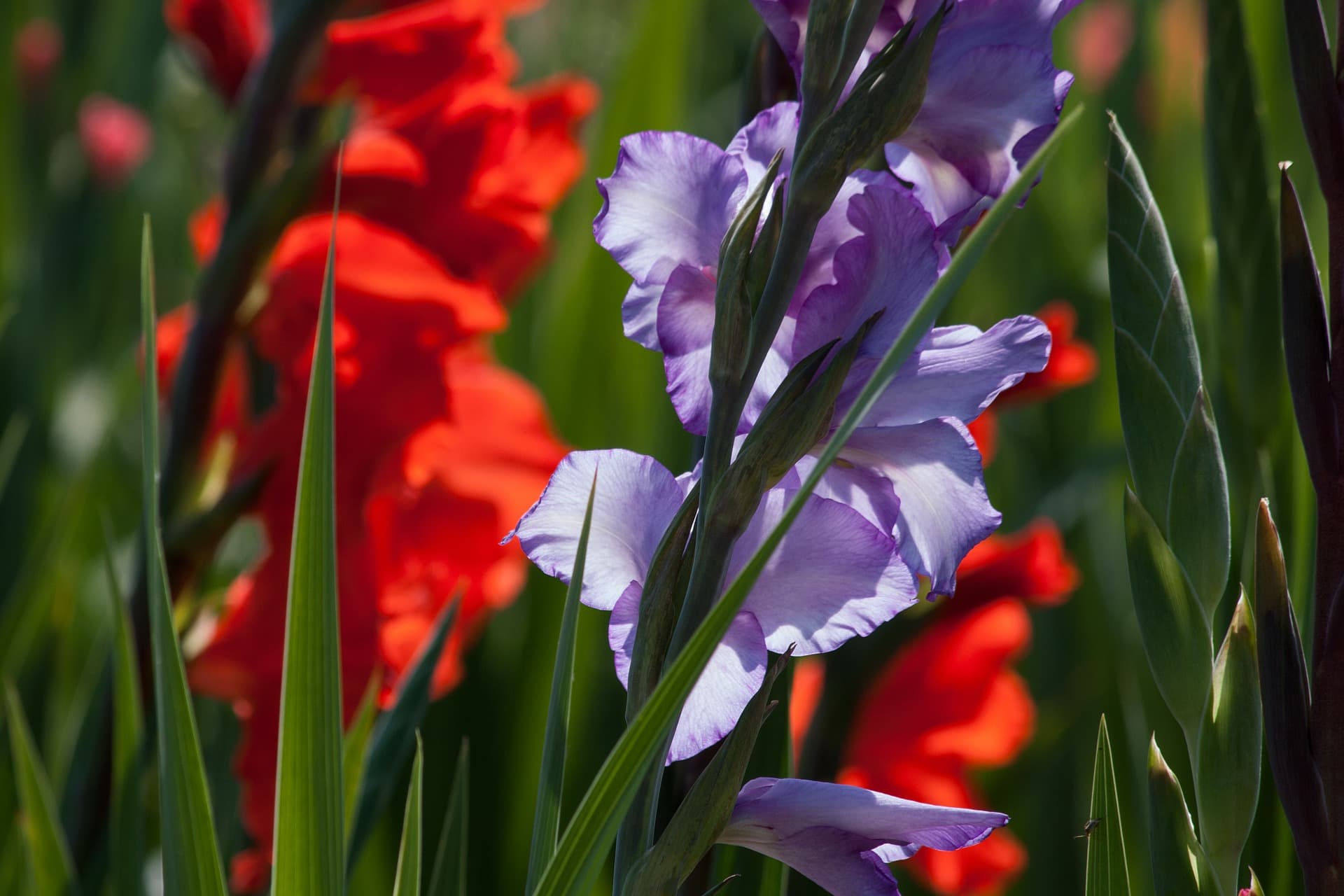
Rachel had thought of being a designer when she was a young girl, but then she married a farmer. She was a musician, an artist, a farmer’s wife, and devoted mother. Rachel could use flowers for artistic expression, and did. Rachel painted the flowers as well. I remember those bouquets!
And then Rachel and John’s daughter, Elaine, planted, cut, and arranged flowers at Highland Orchards. She still enjoys arranging the flowers, and likes to inspect the plantings and give directions about staking, weeding, and cutting.
“Flowers always make people better, happier and more helpful; they are sunshine, food and medicine to the soul.” – Luther Burbank
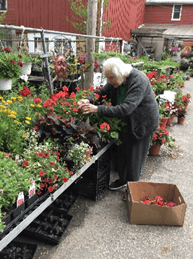
This recognition that flowers add to our health, that they make our souls happier, is the legacy that we have been given over the past 189 years. May we always enjoy our flowers!
For more family history:
Mable Garfield Talley Rotthouse
Rachel Louise Rotthouse Webster
Mary Pauline Connell Webster
Family members:
Friedrich Wilhelm Julius Rothausen (10 Oct 1831-15 June 1912)
married Louisa Friederika Schulmeister (26 Oct 1839-17 Mar 1912)
Children of Louisa and Wilhelm:
Anna (1860-1871), George (1866-1866)
William (Will) Rotthouse (1861-1934)
Charles Rotthouse (1867-1940) (blacksmith at Blue Ball)
Pauline (1868-1920)
Margaret Louise (Louise) (1874-1912) married S. J. Horn
Henry R (Harry) (1879-1970) married Mabel Garfield Talley(1880-1955).
50th Anniversary celebration for William (Wilhelm) and Louisa Rotthouse.
“The house was prettily decorated with daffodils.”
Wilmington, DE The Morning News, March 15, 1909
Frances Hodgson Burnett (1849-1924), was a British-American novelist and playwright. Her first book was called “The Flower Book,” with poems and illustrations. Burnett is best known for “Little Lord Fauntleroy” (pub. 1886), “A Little Princess “(pub. 1905), and “A Secret Garden” (pub. 1911). The family moved from Manchester, England to New Market, Tennessee, in 1865, and Frances began writing to help support the family, publishing stories in magazines starting in 1868, and then publishing her books. She was able to support herself and her family with her writings, and moved back to England in 1890, to Great Maytham Hall, which had a large garden of flowers, with a series of walled gardens–the setting for “A Secret Garden.” Burnett authored 34 books altogether.
Luther Burbank (1849-1926) was an American botanist and pioneer in agricultural science. He developed the Shasta Daisy, Santa Rosa plums, freestone peaches, and the Burbank russet potato, among many other items. The Burbank russet is the number 1 produced potato in the world, used for chips and snacks as well as fresh eating. Burbank partnered with Starks Bros. to develop many different fruits for Starks. Burbank eventually developed 120 different types of plums, 18 peaches, 28 apples, 500 hybrid roses, 30 cherries, 34 pears, 52 gladioli, and more.
My grandfather, John Webster, was honored to meet Mr. Burbank in the early 1920s. We still grow some of Burbank’s varieties, including the Santa Rosa plum and Shasta daisies.
~ Ruth

